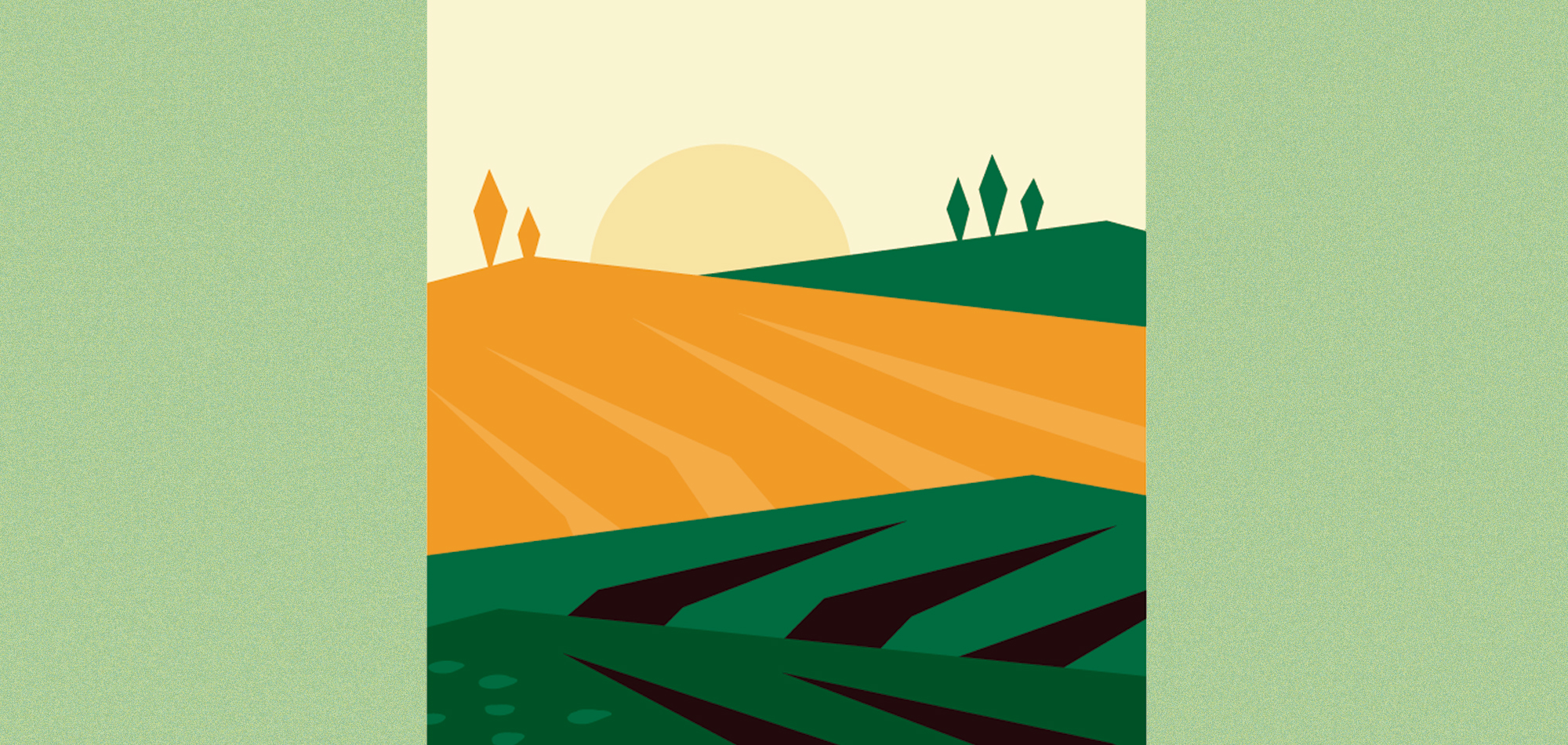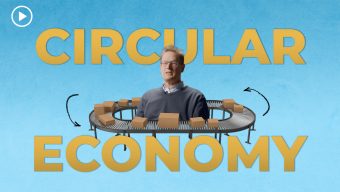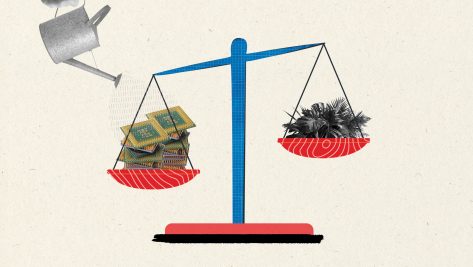Few challenges are more intimidating than feeding a global population projected to reach 9.7 billion in 2050 – at a time when climate change is wreaking havoc on farmers everywhere. The devastation of climate change in the agricultural sector is leading to unprecedented destruction and broken supply chains, food inflation, and the world’s first climate-change-induced famine (in the East African island nation of Madagascar).
While the agricultural sector is a clear victim of climate change, it is also a culprit. Agriculture is a major part of the climate problem, with farms representing 7% of human-caused greenhouse gas (GHG) emissions. If we add all the emissions related to the agri-food sector (including processing, retailing, transporting, cooking and disposing food), we reach a staggering 31% of all human-caused GHG emissions.
Without a clear commitment to transforming the agri-food sector, this percentage could rise substantially. At the COP26 last year, participants agreed on the need to transition towards more sustainable and climate-resilient food systems. But thankfully, the agri-food sector is not waiting for bureaucrats and policymakers to solve this problem for them.
Farmers everywhere are embracing innovation. Many understand that they are part of our climate problem, but they are convinced they can be part of the solution too. No farmer wants to be caught sleeping at the wheel. And while many around the world are feeling increasingly desperate – particularly in a COVID-19 context that has only made matters worse – farmers are collectively rising to the challenge. Farmers understand that they need to reduce their emissions, become more resilient, and feed the world more efficiently. Easier said than done!
Some claim to have found the answer. It is called Regenerative Agriculture. If it seems that this term is in heavy circulation these days, you are not wrong. Many multinationals have embraced regenerative agriculture with passion. However, this method of holistic farming and grazing management practices that improve soil, enhance biodiversity, and increase carbon capture is actually just part of a bigger trend that is disrupting the whole industry.
A new trend in the industry
Food giants and retailers worldwide are committing to sustainably sourcing a big part of their commodity consumption. McCain has announced that all of its French Fries will be made from farms using regenerative agriculture by 2030. Nestlé’s new sustainability plan set aside CHF 1.2 billion (around USD 1.1 billion) for regenerative farming. PepsiCo committed to spreading regenerative farming practices across seven million acres, approximately equal to its entire agricultural footprint. Knorr, from Unilever, will launch 50 regenerative agriculture projects over the next five years to reduce GHG emissions and water use by an estimated 30%. And Starbucks is supporting regenerative agriculture across its entire grower base to produce carbon-neutral coffee.
This call for regeneration represents one of the boldest and most transformational trends in the agriculture and food industry for decades. Food players believe regenerative farming practices can help them cut carbon emissions, at a time when companies everywhere need to substantially reduce their environmental footprint to meet new emission targets. For instance, the EU “Fit for 55” policy targets to cut emissions by 55% by 2030, from 1990 levels. This would require consumers and industries to severely redefine their consumption and production methods. Given that food supply chains are responsible for almost a third of all GHG emissions globally, all players in the industry understand their need to take action now.
Food companies have been investing for years in reducing the emissions and environmental footprint of their processing and distribution operations – a part of a broader search for efficiencies and cost improvements. Now, through their support of regenerative agriculture, they are committed to reducing the emissions at the farm level, while also improving the resilience of their suppliers.
Consequently, the food industry recognizes that it is not enough to reduce emissions from direct operations (Scope 1 and Scope 2) if we are to meet our global decarbonization targets. The industry must also reduce all emissions from the value chain, including all indirect emissions (Scope 3).
This food chain approach is bringing some interesting changes to the strategy of the different value chain players and the industry dynamics. There have been some strategic shifts in the industry: an unprecedented level of collaboration across the food industry, an aggressive level of technification in the upstream portion of the value chain, a shifting balance of power in the industry, and a more demanding food retailing landscape.
Growing collaboration across the food industry
Food companies understand that they will not be able to drive agricultural emissions down by themselves and so we are seeing a substantial degree of collaboration in the food industry.
For instance, The Nature Conservancy, Cargill, McDonald’s, and Target have launched a partnership to support Nebraska farmers’ regenerative agriculture practices. Heineken partnered with agriculture technology (agtech) supplier Agritask to improve the agronomic practices, environmental footprint, and profitability of its barley suppliers in Mexico.
Despite the enormous complexity, it is certain that there will be many forms of cooperation and competition in the industry, driven by the need to find end-to-end value chain solutions.
Technification of farmers
We are seeing an unprecedented level of investment in the agtech space, which seeks to support state-of-the-art technologies that help farmers grow more with less. These solutions focus on increasing the quality and yield of crops, improving farming efficiency and resilience, and reducing the environmental footprint of farming. According to Pitchbook, in Q3 agtech startups’ fundraising broke a record, by raising $3.2 billion across 201 deals, up 57.0% quarter-on-quarter.
We’ll likely see a level of innovation and technological adoption that will substantially transform farming.
Agtech startups, which aim to replace chemical inputs with biological inputs, and precision agriculture, which brings data and technology to improve farming efficiency, are two of the main areas of investment. While the impact of so much VC investment is still to be felt, as the digital & tech spaces in agriculture remain a blue ocean, we’ll likely see a level of innovation and technological adoption that will substantially transform farming, producing more with less, and reducing carbon emissions in the process.
Shifting balance of power
Profound changes like the ones we are seeing in the food industry landscape often bring shifts in the balance of power. The emergence of marketplaces and platforms in the industry and the growing digital capabilities of Agriculture’s largest incumbents (known in the industry as “Big Ag”) are altering the competitive landscape.
There is a clear consolidation trend in the digital space, both in the downstream and upstream segments of the value chain. Companies across the Ag & Food industry are accelerating their M&A activity, and companies across the whole value chain (like John Deere, Bayer, Syngenta, and Nutrien) are assembling a wide range of technical and digital capabilities that blur the classical value chain lines. It is hard to know who competes with whom now.
Not surprisingly, as in many other industries, non-traditional players, like Big Tech, have entered the space. Companies including Microsoft, Amazon, Google, and IBM have launched dedicated and ambitious offerings in the Ag & Food space. Their impact will be felt for sure, but the consequences are still unclear.
Of course, we are also seeing smaller platforms emerge, typically through a combination – via M&A or JVs – of start-ups with synergistic offerings or capabilities, or with a complementary geographical reach. It would not be unreasonable to expect that a winning platform could come from the disruptors and not from the incumbents.
What I believe is that farmers and other food chain actors will eventually only work with a handful of platforms. It might not be a “winner takes all” market, but those platforms with the best value proposition, economics, and user experience will eventually take the lead. This will rearrange the market forces and will result in a shifting balance of power.
A more demanding food retailing landscape
The pandemic has increased our global concern for the environment and it seems that many consumers are willing to pay a premium for sustainable groceries. Therefore, food retailers are more eager than ever to build sustainable supply chains. Given their considerable influence in the food industry, large supermarket chains are putting enormous pressure on food suppliers. They want to reduce the environmental footprint of their suppliers, but also want to help customers identify products that are sustainably produced and sourced.
Regulators are likewise rowing in the same direction. For instance, the EU wants to ban imports of foods including beef and coffee from areas at risk of deforestation. This makes suppliers responsible for accurately tracing and certifying their products at origin.
As such, we are seeing a surge in the demand for end-to-end traceability and product certification. For example, Whole Foods launched a “Source for Good” program to identify responsibly sourced products. Tesco recently announced that it will be adopting the Linking Environment and Farming (LEAF) Marque environmental certification scheme across its entire supply chain. And Lidl is working with a growing number of certification standards and making third-party certification a strategic priority.
The growing demands from food retailers are putting enormous pressure on food companies, and only those companies that can meet these stringent demands will survive and thrive.
A worthy challenge
The transformation of the agriculture and food industry will be one of the biggest and more important global challenges. Not only for the intrinsic importance of their products (without them, we all die!), but because of their substantial environmental footprint.
We are going to see profound and unprecedented changes in the industry, but the encouraging signals coming from all corners of the market give us reasons to hope. At the end of this journey, the agriculture and food industry will become more efficient, more sustainable and more resilient.
© IE Insights.











